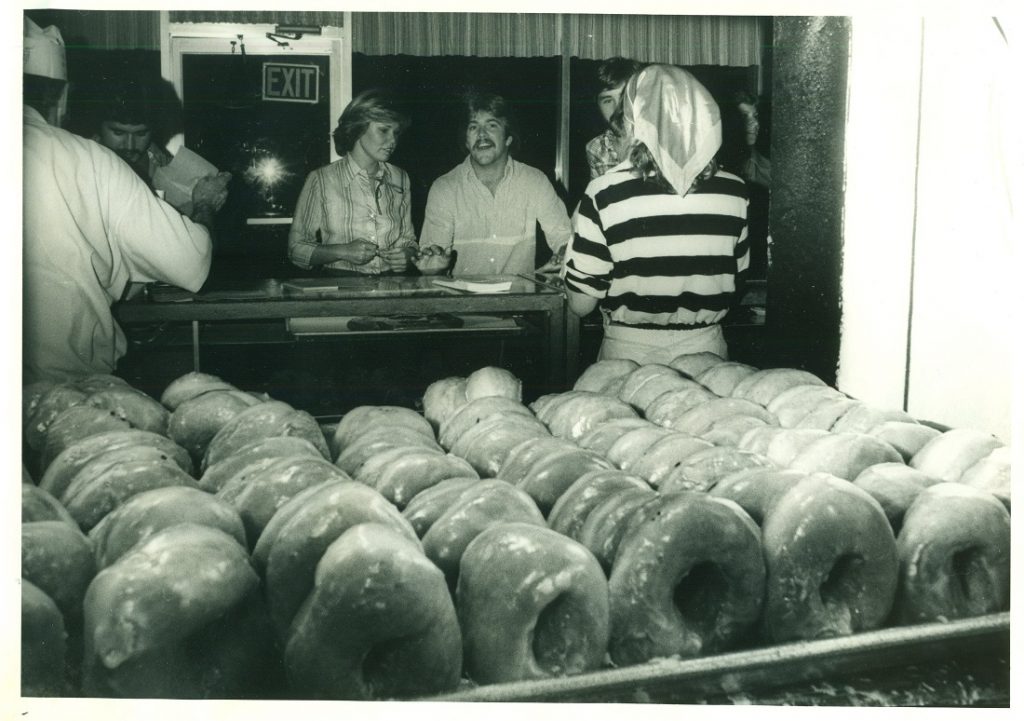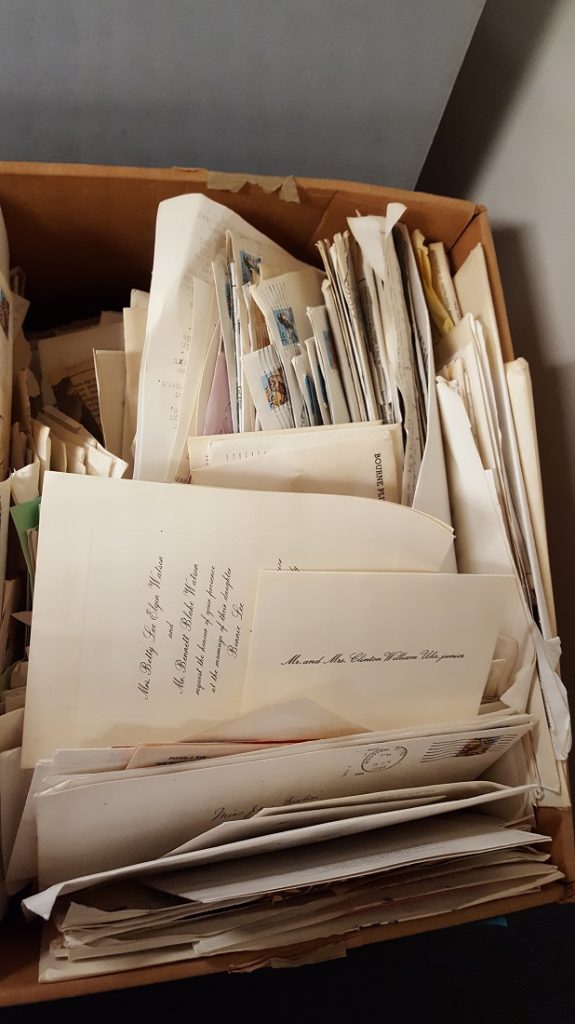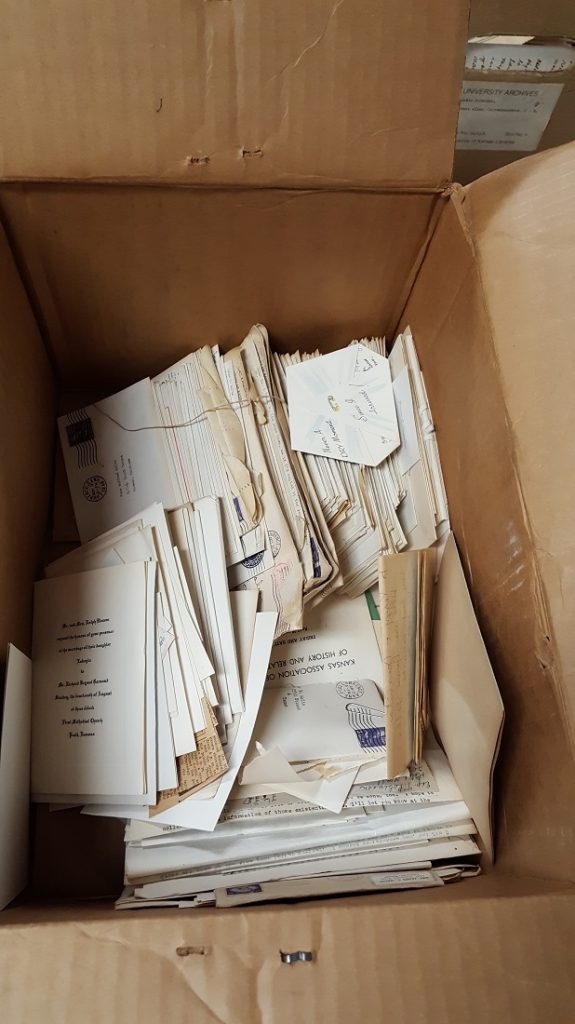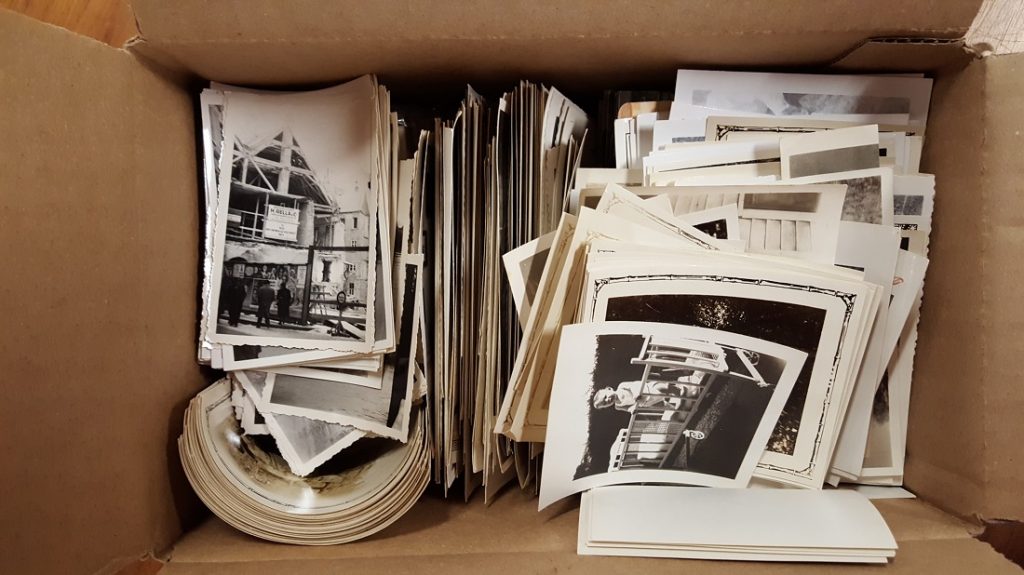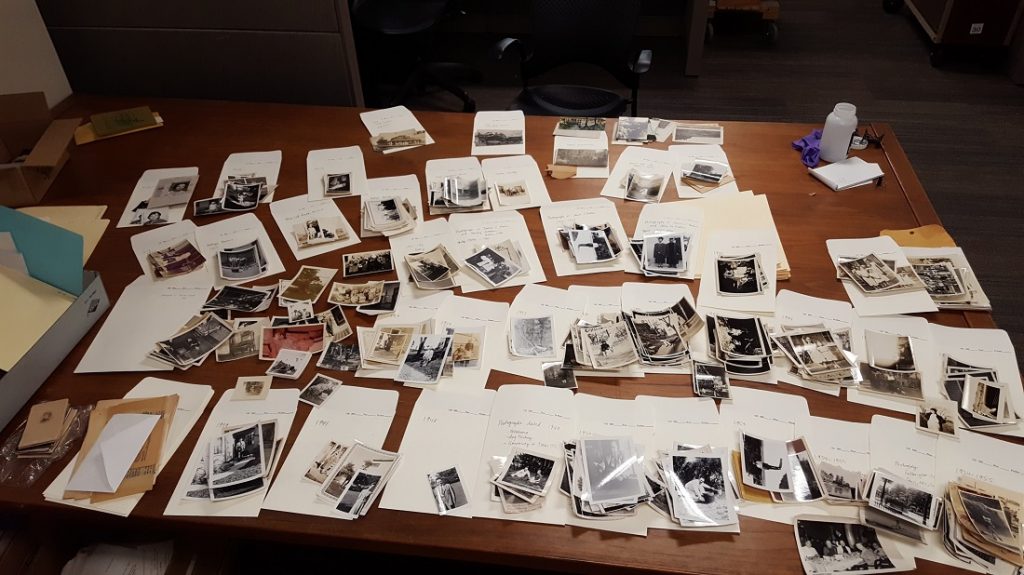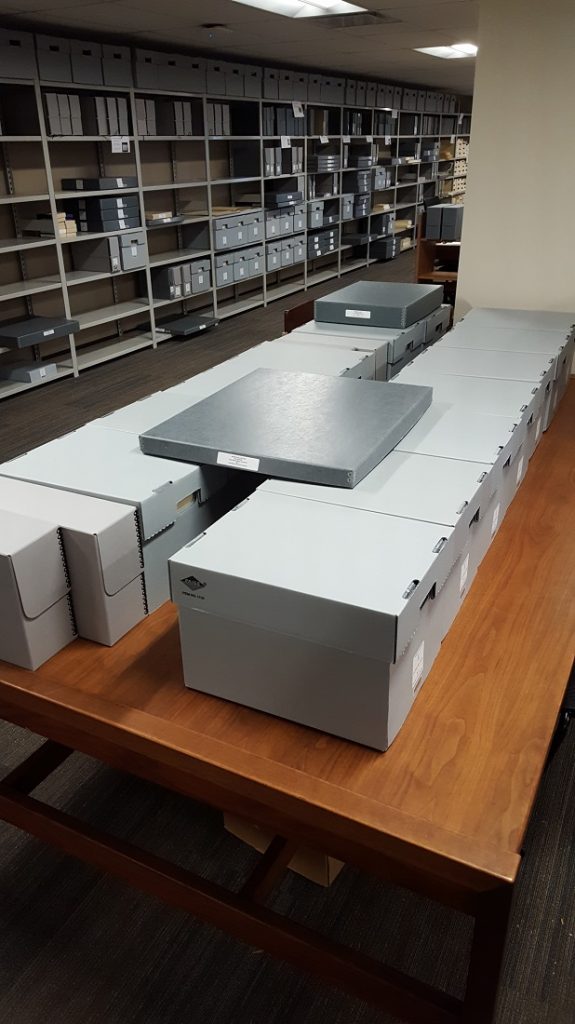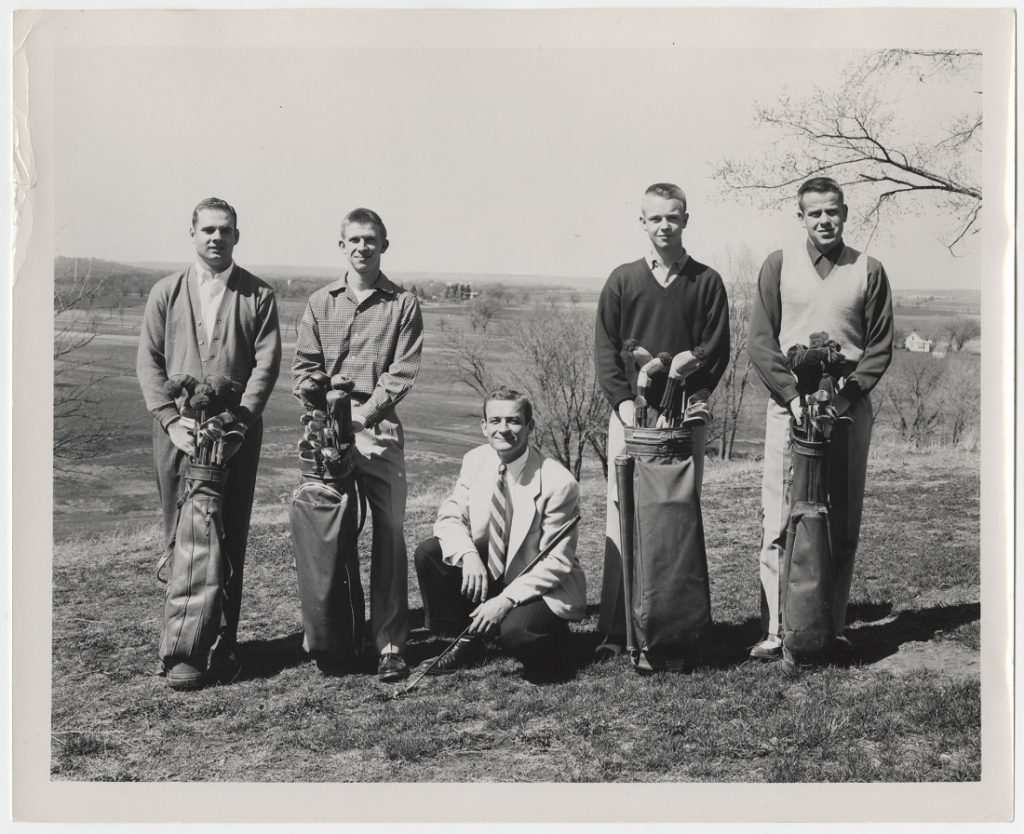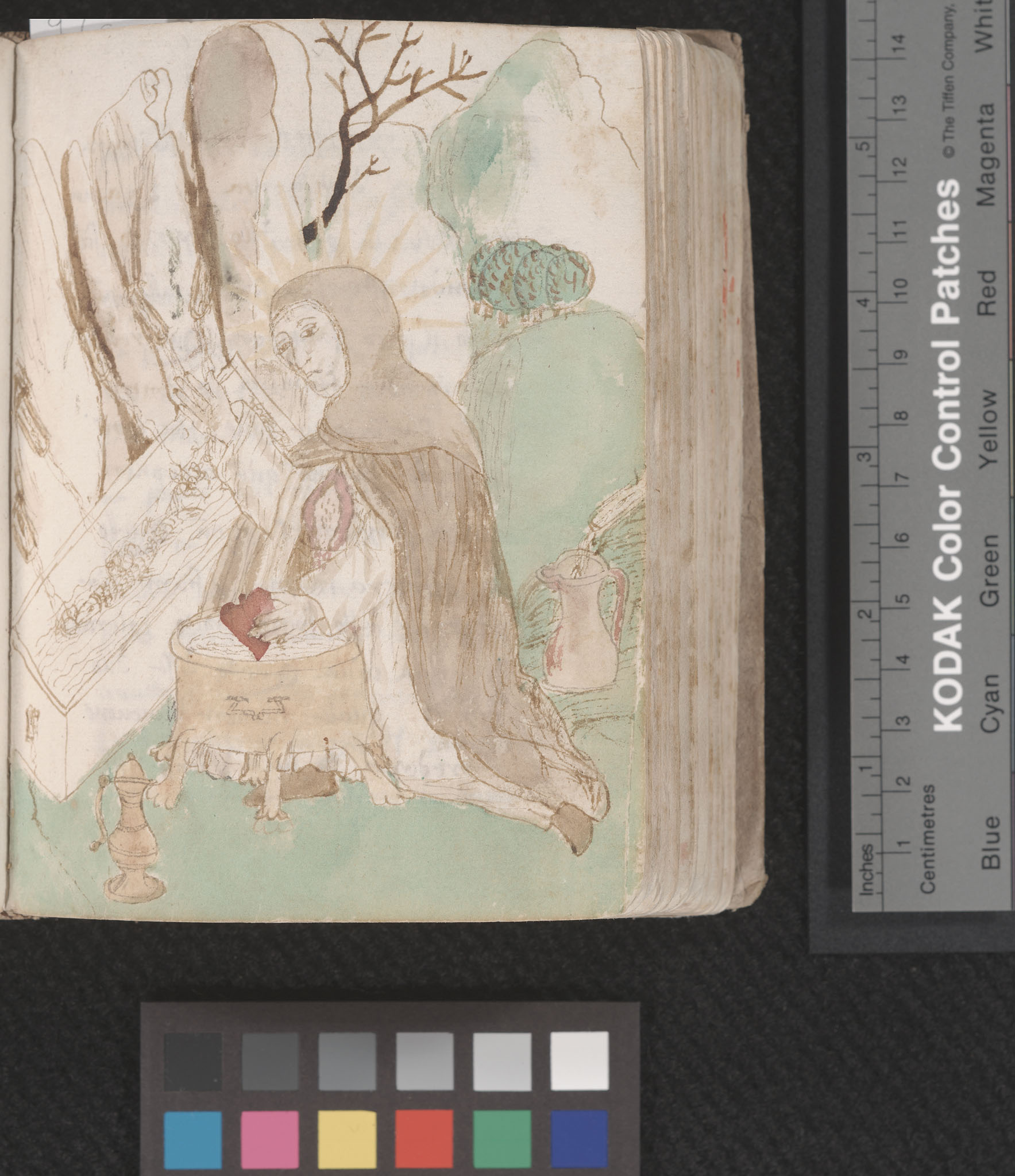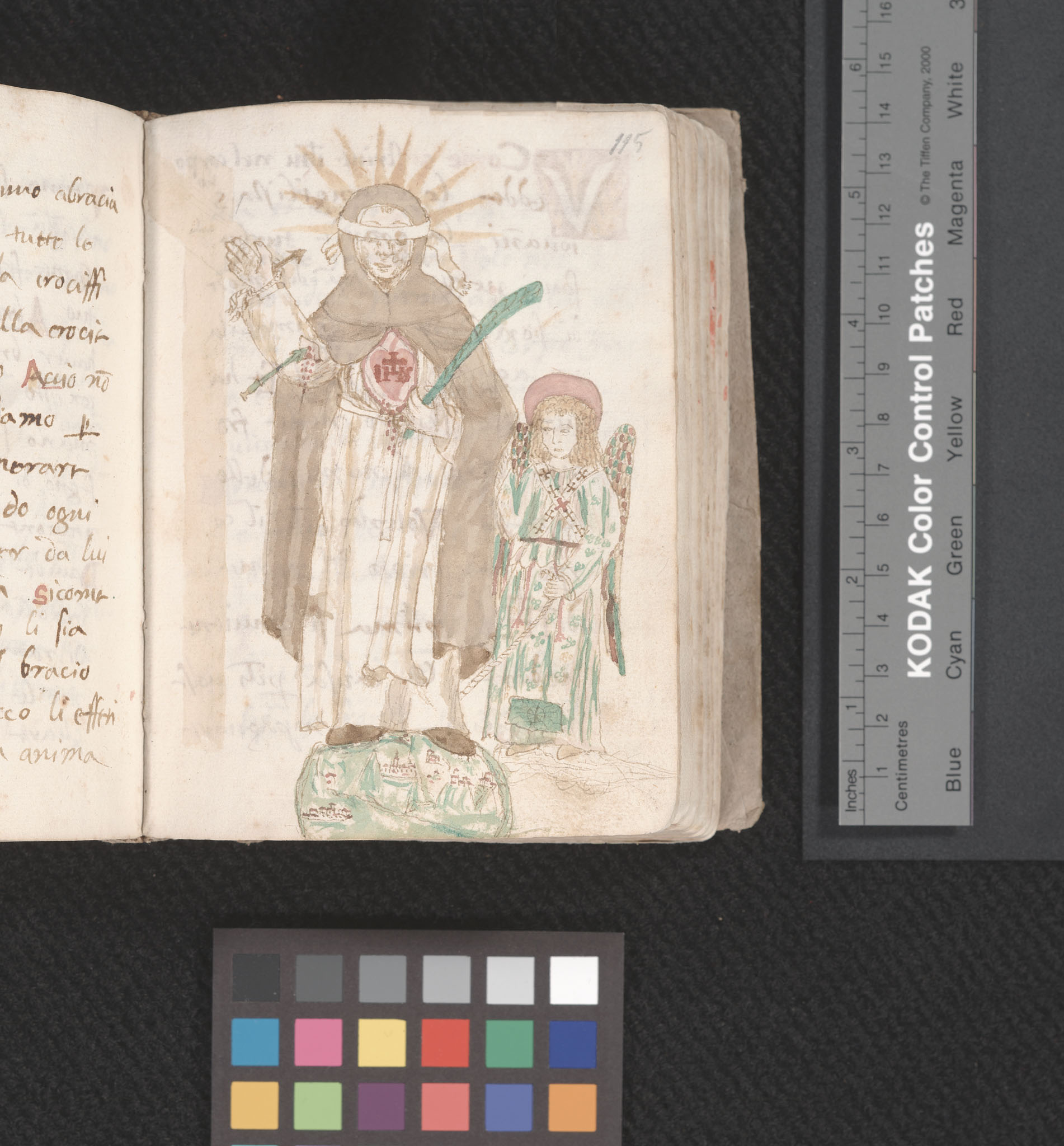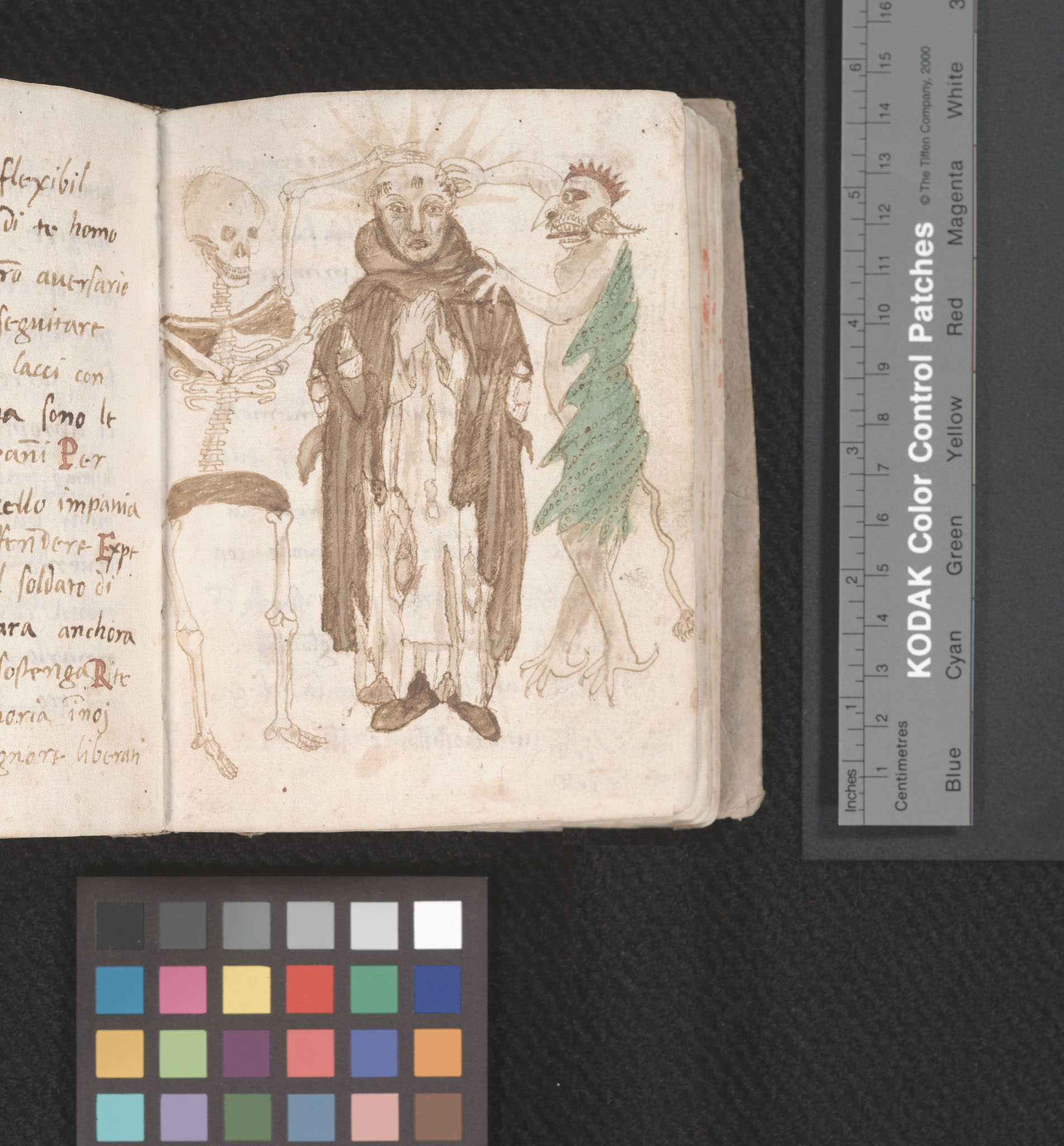In honor of the centennial of World War I, we’re going to follow the experiences of one American soldier: nineteen-year-old Forrest W. Bassett, whose letters are held in Spencer’s Kansas Collection. Each Monday we’ll post a new entry, which will feature selected letters from Forrest to thirteen-year-old Ava Marie Shaw from that following week, one hundred years after he wrote them.
Forrest W. Bassett was born in Beloit, Wisconsin, on December 21, 1897 to Daniel F. and Ida V. Bassett. On July 20, 1917 he was sworn into military service at Jefferson Barracks near St. Louis, Missouri. Soon after, he was transferred to Fort Leavenworth, Kansas, for training as a radio operator in Company A of the U. S. Signal Corps’ 6th Field Battalion.
Ava Marie Shaw was born in Chicago, Illinois, on October 12, 1903 to Robert and Esther Shaw. Both of Marie’s parents – and her three older siblings – were born in Wisconsin. By 1910 the family was living in Woodstock, Illinois, northwest of Chicago. By 1917 they were in Beloit.
Frequently mentioned in the letters are Forrest’s older half-sister Blanche Treadway (born 1883), who had married Arthur Poquette in 1904, and Marie’s older sister Ethel (born 1896).

Forrest Bassett’s senior picture in the
Beloit Memorial High School yearbook, The Beloiter, 1916.
The quotation accompanying his picture is “without my camera, I would be lost.”
Image courtesy of the Beloit Historical Society. Click image to enlarge.
We have reached the last of Forrest’s letters from Fort Leavenworth. By May 31, 1918, he had reached Camp Wadsworth, South Carolina. Forrest’s experiences there are documented in a collection of his letters at the South Caroliniana Library at the University of South Carolina. According to Army Transport Service passenger lists, Forrest and the other members of Co. A left New York City, heading for Europe, on July 7, 1918, aboard the Darro. He returned to the United States almost a year later: on June 3, 1919, he set sail from Brest, France, on board the USS Mount Vernon. This was almost eight months after the armistice but only a week after the Treaty of Versailles formally ended World War I.
Forrest and Marie were married on March 6, 1920, in Beloit, Wisconsin. They had two children: Sally Ann Bassett (1930- ) and Terrence Shaw Bassett (1932-1996).
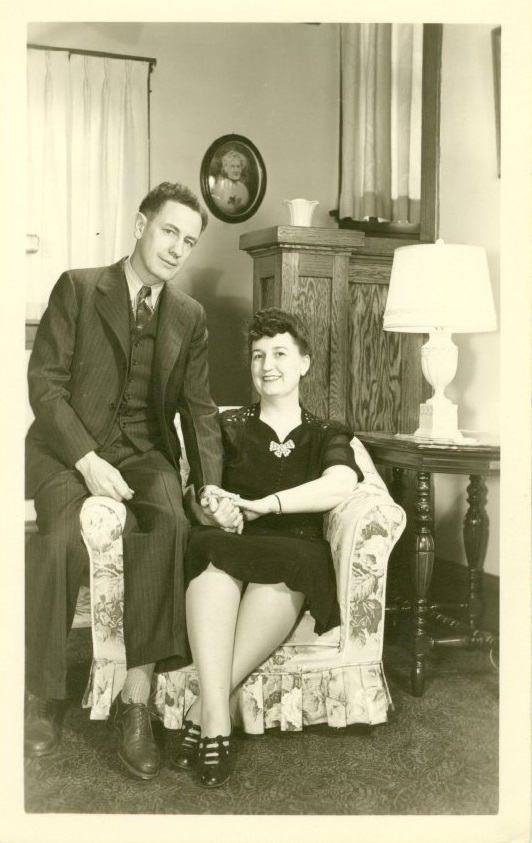
Forrest and Marie Bassett on their twenty-fifth anniversary, March 6, 1945.
Image courtesy of the Beloit Historical Society. Click image to enlarge.

Forrest, Marie, and Terrence Bassett celebrating Sally’s twentieth birthday, March 22, 1950.
A note on the back of the photograph says “Ethel [Marie’s sister?] came down and took this for us.
(The cake is a chocolate ice box cake made with ladyfingers. It was good. You’d have liked it, I know.)”
Image courtesy of the Beloit Historical Society. Click image to enlarge.
According to Forrest’s obituary in the Janesville (Wisconsin) Gazette, he was employed for forty years at Yates-American Machine Co. After retiring, he worked for ten years in the credit department at Dane Aluminum Co. Forrest was a member of numerous community organizations, including American Legion Post No. 48, William J. Huemphner World War I Barracks, the Second Congregational Church, and the Men’s Garden and Beloit Camera clubs.
According to Marie’s obituary in the Janesville Gazette, she was a teacher of speech and oral interpretation for many years. She also worked as a secretary for the Freeman Shoe Company, Yates-American Machine Co., Fairbanks Morse, and the Second Congregational Church, and she served as coordinator of volunteers at the Beloit Senior Center. An “accomplished actress, singer, and solo dramatist,” Marie was a founding member of Beloit Civic Theatre and served on its board of directors. She was also a member and former president of the group Treble Clef.
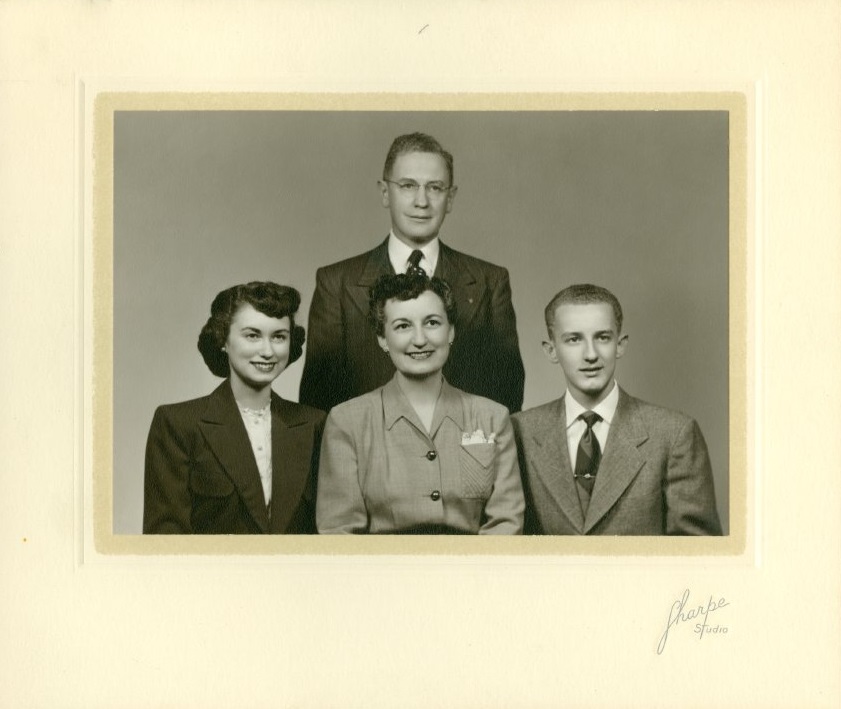
Forrest and Marie Bassett with their children Sally and Terrence, undated.
Image courtesy of the Beloit Historical Society. Click image to enlarge.
Forrest died on August 3, 1985; Marie died October 8, 1992. They are both buried in Oakwood Cemetery in Beloit, Wisconsin.
Special thanks to the staff at the Beloit Historical Society for locating and scanning the images included in this post.
Caitlin Donnelly
Head of Public Services
Meredith Huff
Public Services
Emma Piazza
Public Services Student Assistant

